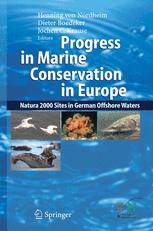

Most ebook files are in PDF format, so you can easily read them using various software such as Foxit Reader or directly on the Google Chrome browser.
Some ebook files are released by publishers in other formats such as .awz, .mobi, .epub, .fb2, etc. You may need to install specific software to read these formats on mobile/PC, such as Calibre.
Please read the tutorial at this link: https://ebookbell.com/faq
We offer FREE conversion to the popular formats you request; however, this may take some time. Therefore, right after payment, please email us, and we will try to provide the service as quickly as possible.
For some exceptional file formats or broken links (if any), please refrain from opening any disputes. Instead, email us first, and we will try to assist within a maximum of 6 hours.
EbookBell Team

4.0
96 reviewsThis volume offers insight in the identification and selection procedure of marine protected areas in the German exclusive economic zones (EEZs) of the North - and Baltic Seas. EU Member States are obliged to establish a coherent network of protected areas, consisting of sites identified under the EC Habitats and Birds Directives. The goal of this Natura 2000 network is the conservation of biodiversity on land and in the sea. To fill important gaps in knowledge regarding the presence, abundance, and distribution of certain species and habitats in the German North- and Baltic Seas, the German Federal Agency for Nature Conservation (BfN) initiated a detailed research programme, involving researchers from many renowned German marine research institutes. This book contains the main results of the different projects under this research programme, which formed the basis for the identification and selection of the Natura 2000 sites. Information is given on two NATURA 2000 habitats (sandbanks and reefs), and benthic species, fish, birds and marine mammals, as well as on legal aspects and implementation procedures. Last but not least the book introduces the current status of NATURA 2000 in the German EEZ. Target audience are not only scientists, but also policymakers, environmental organisations and other stakeholders, and the book includes many illustrations.